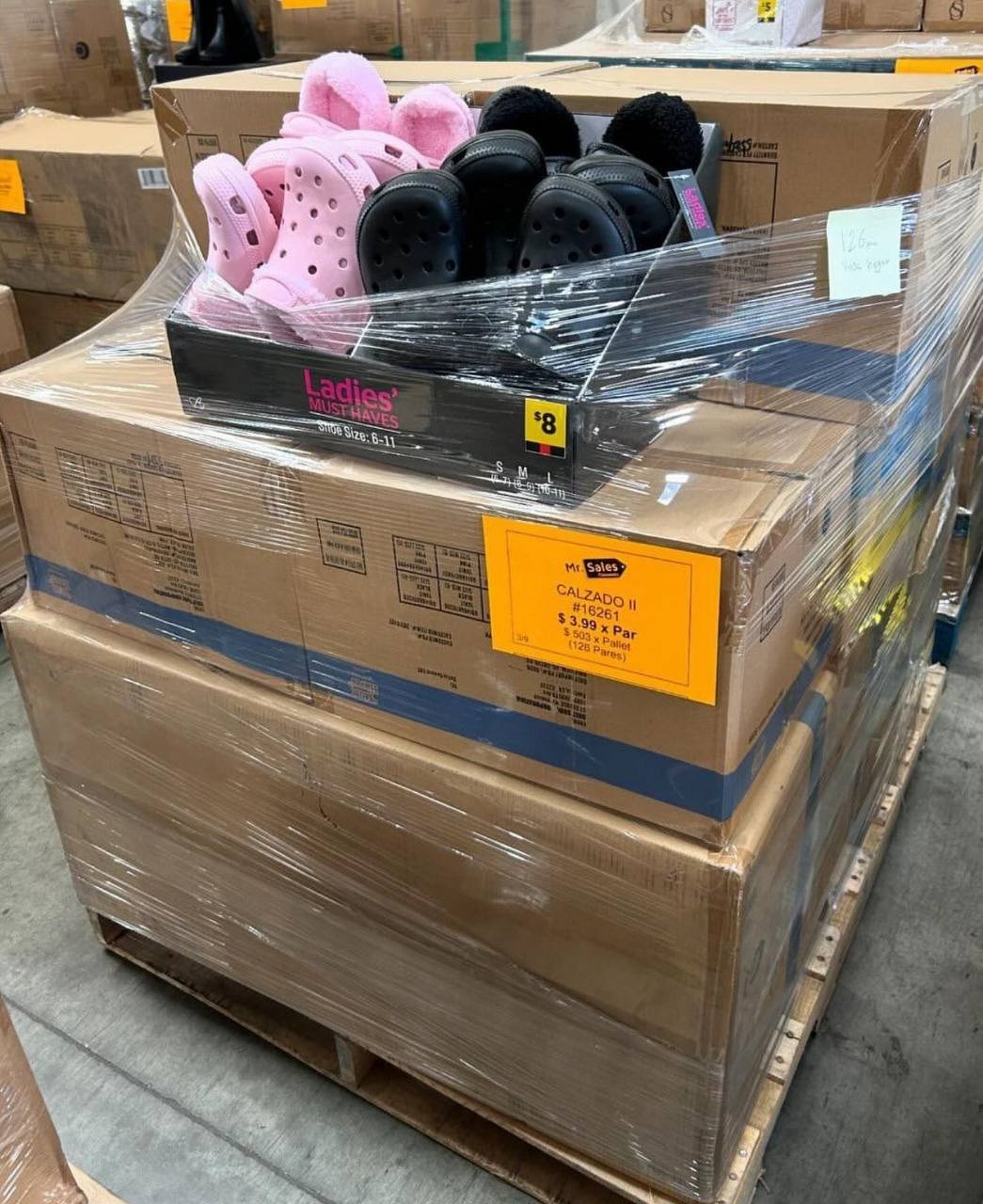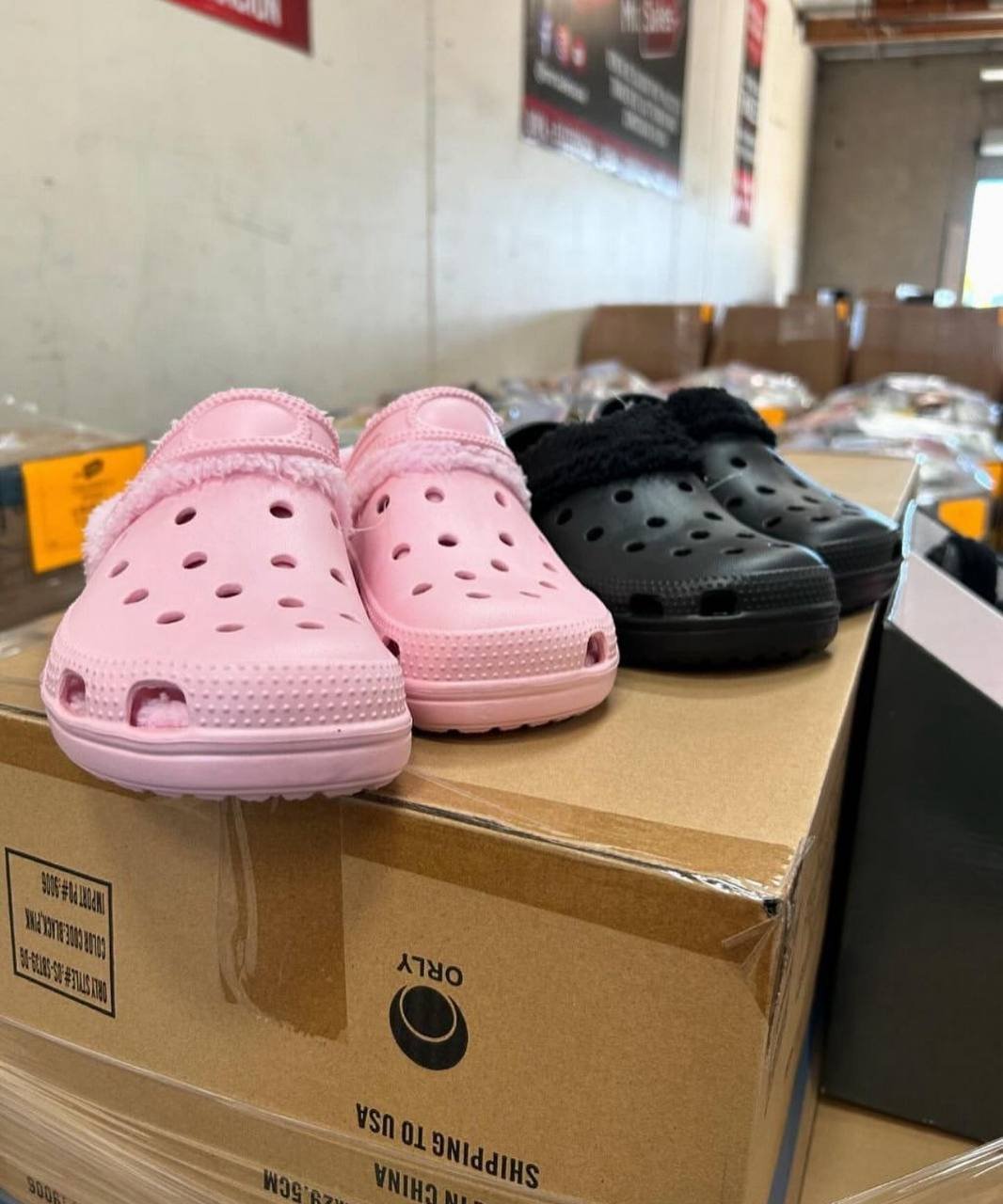Footwear: A Comprehensive Overview.pallets of shoes wholesale
Each pallet contains 100 pieces as a wholesale se sell each pair for $12 you can resale them for $20 to $30 depending how fast you want to liquidate to your clients as well
Introduction
Footwear is more than a mere accessory; it is a functional necessity, a cultural symbol, and a fashion statement. From primitive sandals to smart shoes embedded with technology, footwear has evolved significantly over millennia.
This article explores the history, types, materials, design considerations, cultural roles, and future of footwear in depth.pallets of shoes wholesale
History of Footwear
The earliest evidence of footwear dates back to around 8,000 BCE, when humans began using natural materials like bark, animal hides, and plant fibers to protect their feet from harsh terrain. Archaeological findings suggest that the first shoes were soft, simple sandals made for basic protection.
Key Milestones:
-
Ancient Egypt & Mesopotamia: Sandals made of woven papyrus and palm leaves.
-
Ancient Greece & Rome: Leather sandals and boots; footwear indicated social status.
-
Middle Ages: Shoes became pointed; wooden clogs were popular in Europe.pallets of shoes wholesale
-
18th–19th Century: The Industrial Revolution brought mass production, making shoes more accessible.
-
20th Century to Present: Rise of fashion brands, sportswear companies, and ergonomic design.
Types of Footwear
Footwear can be categorized based on purpose, material, design, or user. Here are some of the primary types:
1. Casual Footwear
-
Sneakers/Trainers: Designed for comfort and casual wear.pallets of shoes wholesale
-
Loafers & Slip-ons: Easy to wear, versatile.
-
Sandals & Flip-flops: Ideal for warm weather; minimal coverage.
2. Formal Footwear
-
Dress Shoes: Includes Oxfords, Derbies, Brogues, and Monk straps.
-
Heels & Pumps: Predominantly worn by women for formal occasions.
3. Athletic Footwear
-
Running Shoes: Cushioning, support, and breathability.pallets of shoes wholesale
-
Basketball, Soccer, and Tennis Shoes: Designed for specific movements.
-
Cleats: Feature studs or spikes for grip on grass or turf.pallets of shoes wholesale
4. Protective Footwear
-
Work Boots: Reinforced with steel toes, slip-resistant soles.
-
Hiking Boots: Durable, supportive, waterproof.pallets of shoes wholesale
-
Military/Combat Boots: Tough, tactical design.
5. Specialty Footwear
-
Orthopedic Shoes: Customized for medical needs.pallets of shoes wholesale
-
Dance Shoes: Lightweight and flexible (e.g., ballet slippers, jazz shoes).
-
Smart Shoes: Embedded with sensors and technology for health tracking or navigation.
Materials Used in Footwear
Footwear materials impact comfort, durability, aesthetics, and cost. Common materials include:
-
Leather: Durable, breathable, and traditional.
-
Canvas and Textiles: Lightweight and versatile.pallets of shoes wholesale
-
Rubber: Used for soles due to flexibility and grip.
-
EVA and PU Foam: Cushioning and support.
-
Synthetic Materials: Often used in performance shoes.pallets of shoes wholesale
-
Recycled and Eco-friendly Materials: Gaining popularity due to sustainability concerns.
Footwear Design and Manufacturing
Footwear design balances aesthetics, function, and ergonomics. Key considerations include:
-
Foot Anatomy: Arch support, heel height, toe box space.
-
Biomechanics: Motion control, pronation, impact absorption.pallets of shoes wholesale
-
Style Trends: Driven by fashion houses, influencers, and seasonal changes.
-
Technology Integration: 3D printing, smart insoles, and custom fit solutions.
Manufacturing typically involves several stages: prototyping, last (foot mold) creation, material cutting, stitching, assembling, and finishing. Modern factories use automation and CAD (computer-aided design) for precision and efficiency.
Cultural and Social Significance
Footwear carries strong cultural meanings across the globe:pallets of shoes wholesale
-
Status Symbol: High-end brands like Louboutin or Gucci signify wealth and fashion.
-
Ceremonial Use: Special shoes for weddings, religious rituals, or dances.
-
Taboo or Symbolism: In some cultures, shoes are removed before entering homes or sacred places.
-
Pop Culture Influence: From Air Jordans to Yeezys, sneakers have become cultural icons.
The Future of Footwear
The footwear industry is constantly evolving with technology and sustainability:
Key Trends:
-
Sustainable Materials: Biodegradable shoes, vegan leather, closed-loop recycling.
-
Customization: 3D scanning and printing for custom-fit shoes.pallets of shoes wholesale
-
Smart Footwear: Features like fitness tracking, posture correction, and adaptive cushioning.
-
Virtual Try-Ons: Augmented reality apps for online shoe shopping.
-
Minimalist & Barefoot Designs: Focus on natural movement and foot health.
Conclusion
Footwear is a vital part of human life that blends utility, identity, and innovation. From ancient sandals to high-tech smart shoes, the evolution of footwear reflects broader trends in technology, culture, and society.
Whether for protection, performance, or personal expression, shoes will continue to step forward as both a practical necessity and a powerful symbol.pallets of shoes wholesale







Reviews
There are no reviews yet.